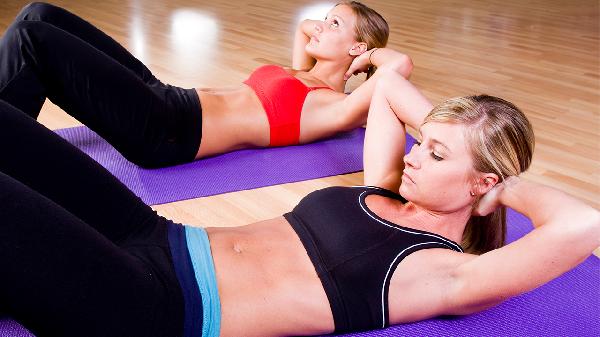Crunches are one of those exercises that seem simple at first glance—just lie on your back, curl up, and repeat, right? Well, not exactly. While crunches are a staple in many fitness routines, nailing the proper form is trickier than most people realize. Done right, they can seriously strengthen your core. Done wrong? You might as well be doing nothing—or worse, risking injury. So let’s break it down the right way, with expert-backed tips to make sure you’re actually getting the most out of every rep.
Why Crunches Deserve a Spot in Your Workout
First off, crunches aren’t just about getting a six-pack (though that’s a nice bonus). They target multiple muscle groups, including your rectus abdominis (the front-and-center abs), internal and external obliques (the side muscles that help with rotation), and even your transverse abdominis—the deep core muscle that acts like a natural corset. Strengthening these muscles isn’t just for aesthetics; it’s about function. A strong core improves posture, reduces lower back pain, and makes everyday movements—like getting out of bed or picking up a heavy grocery bag—way easier. Plus, a stable core means better performance in other exercises, from deadlifts to running.
The Hand Placement Debate
One of the biggest mistakes people make with crunches? Misplacing their hands. You’ve probably seen folks interlock their fingers behind their head, but that’s actually a risky move if you’re not careful. Pulling on your neck can strain your cervical spine, turning what should be an ab exercise into a fast track to discomfort. Instead, try crossing your arms over your chest—it keeps the focus on your core and reduces the temptation to yank your head forward. If you do prefer hands behind the head, make sure your arms stay relaxed—no tugging allowed.
Neck and Spine Alignment: The Silent Game-Changers
Another common flub? Craning your neck forward like a turtle peeking out of its shell. Not only does this take the work away from your abs, but it also puts unnecessary stress on your neck. To avoid this, pick a spot on the ceiling and keep your eyes locked there as you crunch. And don’t forget about your lower back—it should stay glued to the floor. If your back starts lifting, you’ve gone too far (that’s a sit-up, not a crunch). Overarching can strain your spine and shift the effort to your hip flexors, which defeats the whole purpose.
Hip Flexors: The Sneaky Core Hijackers
Speaking of hip flexors, these muscles love to take over when your core isn’t fully engaged. If you feel your hips doing most of the work, it’s a sign your abs have checked out. Ridge Davis, a trainer at Glo, points out that mindless crunches often lead to this imbalance, which can contribute to lower back issues over time. The fix? Slow down, focus on controlled movement, and really squeeze those abs at the top of each rep. Quality over quantity, always.
Step-by-Step: The Perfect Crunch
Ready to put it all together? Here’s how to execute a textbook crunch: 1、Lie on your back with knees bent and feet flat on the floor. 2、Cross your arms over your chest or lightly rest your hands behind your head (no pulling!). 3、Engage your core by drawing your belly button toward your spine. 4、Slowly lift your shoulders a few inches off the ground, keeping your lower back pressed down. 5、Pause at the top, then lower back down with control. The key is a slow, controlled motion—no jerking or momentum. If you’re flying through reps, you’re probably cheating your core out of the work.
Level Up: 11 Crunch Variations to Try
Once you’ve mastered the basic crunch, why not mix it up? Different variations target your abs from new angles, keeping your workouts fresh and challenging. Some favorites:
Are Crunches Really Worth It?
With so many core exercises out there (planks, leg raises, Russian twists—oh my!), you might wonder if crunches are even necessary. The short answer: Yes, but they shouldn’t be your only move. Crunches isolate the abs well, but a balanced core routine includes exercises that challenge stability and rotation too. If you’re dealing with back issues, though, check with a physical therapist—sometimes crunches can aggravate certain conditions.
At the end of the day, crunches are a classic for a reason. When done right, they’re an efficient way to build core strength—just don’t let sloppy form turn them into a waste of time (or a pain in the neck, literally). So next time you hit the mat, slow down, focus on technique, and let those abs do the work. Your core—and your future self—will thank you.
























